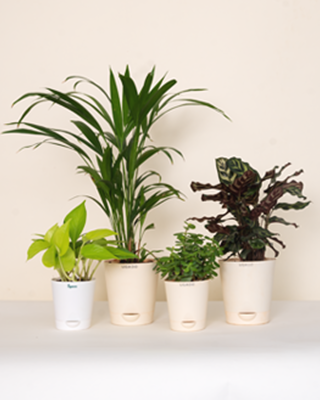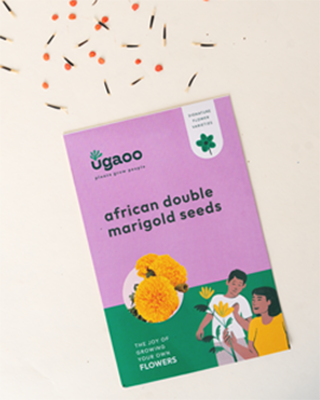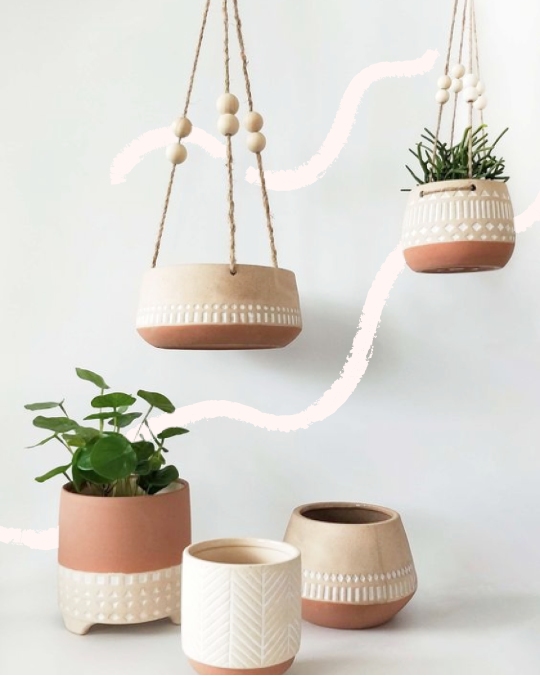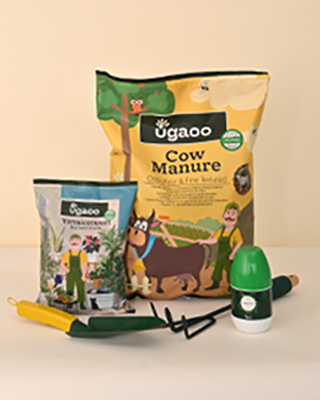Coleus plants are well-known foliage plants, grown for their stunning ornamental leaves and showy presence in gardens. These plants do well outdoors and indoors, thriving in full sun as well as partial shade. Different Coleus varieties are also well-known to be tolerant of different soil types, making them versatile growers in gardens everywhere.
Additionally, as much-beloved ornamental foliage plants, new Coleus varieties are constantly being introduced to the world of gardening, each new variety more tolerant than the last. This makes Coleus plants even more desirable as ornamental foliage plants.
This blog will tell you all about Coleus plants and basic plant care tips for this wonderful foliage plant. Read on to know more!
• Know Coleus Plants Better: Features, Basic Information, and Benefits

Here is some basic information to better acquaint you to Coleus varieties:
| Size when mature | 6-34 inches - height and width |
| Preferred soil type | Well-drained and aerated, rich, and moist |
| Sunlight requirements | Partial sunlight - partial shade |
| Coleus Flowers | Small, inconspicuous flowers in blue-white |
| Native to | Asia |
| Toxicity | Toxic to pets in general |
Some other features that you must know about Coleus plants are:
1. Vibrant Foliage
Known for their colorful and diverse foliage, Coleus plants come in a range of bright colors and patterns. The colors of the plants range from a bright, vibrant green to a bright, purple-red color that usually adorns the center of the leaves.
2. The Coleus Plant Belongs to the Mint Family

Maybe you expected it or maybe you didn't but the Coleus plant hails from the Mint family! This plant is native to Asia but grows well almost anywhere. These plants and flowers are very similar to other plants from the same family, with square stems and opposite stems.
3. Versatile Growth
Growing Coleus outdoors is very easy because many Coleus varieties are often grown outdoors. However, this plant is very easy to grow indoors as well and exhibits a versatile growth pattern. Additionally, while they are open garden plants, it is also very easy to grow Coleus plants in pots, making them popular options as decorative indoor plants.
4. Coleus Flowers

It may not look like Coleus plants produce flowers but that's only because these flowers are pinched out as they start blooming in order to encourage better leaf growth. This is because the leaves are the main attraction and hampering their growth for relatively inconspicuous flowers does not seem ideal. The Coleus flower grows on a tall spike and is typically a blue-white color.
5. Low Maintenance
These stunning ornamental foliage plants are known and beloved for their low maintenance care requirements and fuss-free nature. With these plants, a little care goes a long way! Just a little bit of your time and attention can help this plant thrive and give you wonderful display of vibrant leaves.
6. Air Purification
Much like many other indoor plants, these plants are also great indoor air purifiers. Coleus plants indoor help create a healthier and cleaner environment by filtering out commonly found indoor air pollutants such as formaldehyde, benzene, and other particulate matter. In turn, these plants produce extra oxygen, giving you more clean air to breathe in.
7. Coleus Plant Growing Season

Usually, Coleus seeds are sown in the spring season. The seeds can be planted till the season of a mild winter arrives. Coleus plant seeds are susceptible to frost, which is why their planting season is before severe winters. Subsequently, the Coleus plant growing season is usually between summer to early fall months. The flowers of this plant also grow in this season.
• Coleus Varieties to Grow in Your Garden
As we mentioned, there are too many varieties and cultivars of Coleus plants that have been introduced in recent times. Here are a few of them that you can grow in your gardens:
1. Campfire Coleus

This striking red Coleus plant is a stunning variety that - when grown in pots - can make it look like flames emerging from the depths of the pot. This Coleus variety grows to be around 20 inches tall, making for a great border plant or potted plant indoors.
2. ColorBlaze Golden Dreams
This Coleus plant type looks a lot like the Moon Valley Pilea plant's foliage. Its lovely patterns and stunning colors grant it the gift of versatility and desirability. This variety usually grows to be taller than Campfire and when fully mature, it stands 36 inches tall. The electric, neon green highlights the veins of blood-red running through the plant, making it an outstanding Coleus variety.
3. Dragon Heart
Growing to be 28 inches tall and wide, the Dragon Heart Coleus a timeless and elegant beauty. This plant boasts slightly pointed and curved leaves, adorned with pink veins and burgundy splashes running through the backdrop of a lime green. This variety of Coleus plants screams versatile and aesthetic!\
4. ColorBlaze Wicked Witch

Standing slightly tall at 30 inches tall and wide, this Coleus plant variety is another stunner with unique shapes and colors. With lime green margins that embrace a burgundy-black inside, this plant is another gardeners foliage favorite. The edges of this plant's leaves are serrated and toothed deeply, giving them a more unique look.
• Coleus Growing Conditions: Indoor Coleus Plant Care
While low maintenance, Coleus plants still require some basic needs to be met in order to thrive in its environment, whether it is kept indoors or outdoors. So, here are a few basic care tips for growing Coleus plants indoors:
1. Light Requirements

Provide your indoor Coleus with bright, indirect light. Remember to not leave the plant at a place where it is exposed to direct sunlight as it can scorch its delicate leaves.
2. Temperature
This foliage plant does not tolerate the cold very well. So, you must maintain a consistent temperature between 15-24°C and protect the plant from sudden temperature changes or drafts anywhere in your house.
3. Humidity Requirements
Coleus plants thrive in higher humidity levels. You can increase humidity around the plant by misting it regularly or using a humidity tray lined with pebbles.
4. Watering
The Coleus prefers consistently moist, but not waterlogged soil. So, water only when the top inch of soil feels dry.
5. Soil

Use a well-draining potting mix rich in organic matter. Usually, Coleus plant potting mix must mainly consist of red soil to ensure proper growth. Also always ensure the pot you've selected has drainage holes to prevent waterlogging.
Buy Red Soil
6. Fertilization
Feed your indoor plant with a balanced, water-soluble fertilizer every two weeks during its growing season. In winters, during its period of dormancy, you can reduce or completely eliminate fertilization.
7. Container
Use a pot that allows for adequate root growth and has enough drainage holes. Repot the plant annually or when the plant outgrows its container.
• Growing Coleus Outdoors: Basic Care Tips
Growing Coleus outdoors? No worries! Here are a few care tips for the same:
1. Light Requirements

This plant prefers partial shade to protect its delicate foliage from intense sunlight. So, while it can tolerate some morning sun, but afternoon shade is ideal, meaning you should plant it in a spot accordingly.
2. Temperature
Outdoors as well, this plant is best grown in temperatures between 15-24°C. However, since you can't control the temperatures outdoor, remember that this plant is not tolerant of and does not take well to extreme cold. So, if you live in an area that gets very cold in winters, plant Coleus seeds after the last cold wave in spring and bring it indoors before the first cold wave in fall months (i.e. around August).
3. Watering
Same goes for outdoor Coleus, water it regularly to keep the soil consistently moist but not waterlogged. Here, you can also mulch around the plants to retain soil moisture and regulate temperature.
4. Spacing
When placed too close to each other, plants can have an issue with growing properly and often have to fight for space and resources. So, space your Coleus plants 12-18 inches apart to ensure good air circulation and reduce the risk of disease.
5. Seasonal Care Outdoors
Plant Coleus outdoors after the danger of cold waves has passed. Additionally, in regions with mild winters, Coleus plants can be grown as perennials; in colder areas, you can treat it as an annual or bring indoors before frost.
Also Read: Annuals versus Perennials
• Common Problems Faced by Coleus Plants: What Must you Look Out For?
Every plant faces problems due to one reason or another. But some plants are more susceptible to certain problems than others are. So, for Coleus plants, here are a few things you must look out for:
1. Leaf Drop
Often caused by sudden changes in temperature or light conditions. So, to avoid this, you must ensure stability in the direct environments of this plant.
2. Pests to Watch Out For

Coleus plants are susceptible to aphids, spider mites, and whiteflies. You can make use of Ugaoo's Neem Oil to avoid all kinds of pests and insects that may try to attack your plant.
3. Root Rot
Caused by overwatering or poorly draining soil. You must ensure that your plant's soil is properly drained and aerated, and that you're using a pot with adequate drainage holes for optimal overall plant health.
4. Leggy Growth
This results from insufficient light and pinching back leggy stems can promote bushier growth as per your liking.
Often, foliage plants like the Coleus enhance and uplift the whole look of a garden with their mesmerizing leaves and the patterns they flaunt. Now that you know better about these plants, which Coleus variety will you be growing?

















